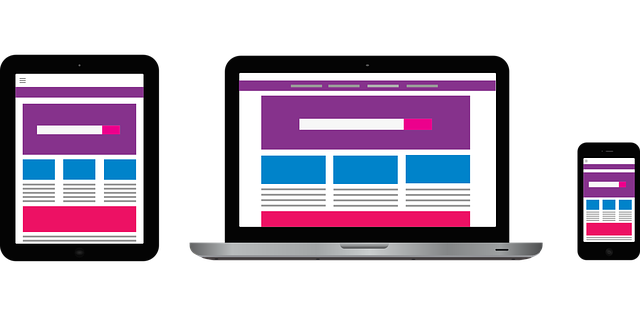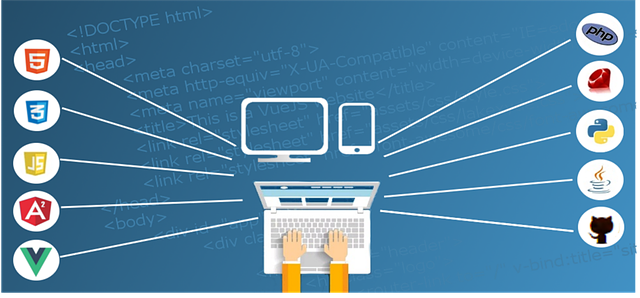Social media integration is a powerful strategy for businesses seeking affordable web design solutions. By embedding social media platforms, companies drive organic traffic, improve SEO, and foster brand awareness through enhanced user engagement. This approach leverages existing channels to showcase user-generated content, build communities, gain insights, and achieve better conversion rates. Integrating social media into your website through strategic platform selection, user-friendly plugins, and visually appealing content boosts engagement and online presence. Measuring key metrics like engagement rates, traffic, conversion rates, and sales data is vital for refining successful social media strategies that align with long-term business goals. The future of web design will continue to integrate dynamic features and advanced technologies, demanding agile strategies to keep pace with evolving user behavior and trends.
Social media integration is transforming the way businesses connect with their audiences, offering unprecedented opportunities for engagement and growth. This article explores the multifaceted benefits of seamlessly integrating social media into your website design, emphasizing the role of affordable web design in making this strategy accessible to all. From choosing the right platforms to enhancing user experience through interactive elements, we’ll guide you through proven strategies for effective social media integration, tracking success, and maintaining a consistent online presence.
Understanding Social Media Integration: Its Definition and Benefits

Social Media Integration refers to seamlessly embedding social media platforms into your website or digital strategy, allowing for two-way interaction and content sharing. It’s more than just adding social media buttons; it involves creating a unified experience that encourages user engagement and fosters brand awareness. By integrating social media, businesses can unlock a range of benefits, such as increased website traffic, improved SEO (search engine optimization), and enhanced customer interactions.
This strategy offers affordable web design solutions by providing an opportunity to leverage existing social media channels to drive more organic traffic to your site. It enables businesses to showcase user-generated content, build communities, and gain valuable insights into consumer behavior. With effective social media integration, companies can create a cohesive online presence that resonates with their target audience, ultimately leading to better conversion rates and business growth.
The Role of Affordable Web Design in Effective Social Media Integration

In today’s digital age, affordable web design plays a pivotal role in effective social media integration for businesses and individuals alike. A well-designed website acts as a central hub, seamlessly connecting various social media platforms to create a cohesive online presence. With a focus on accessibility and cost-effectiveness, affordable web design ensures that even small enterprises or startups can establish a strong digital footprint without breaking the bank. This accessibility democratizes online visibility, allowing diverse businesses to compete in the vast digital landscape.
Integrating social media platforms into an affordable web design strategy enables seamless content sharing, engagement with audiences, and cross-platform consistency. A professionally designed website not only showcases brand identity but also facilitates easy navigation for users who arrive via social media links. By optimizing for various devices and screen sizes, these designs ensure a consistent user experience across desktops, tablets, and smartphones, thereby maximizing reach and interaction on each platform.
Key Strategies for Seamless Social Media Incorporation into Your Website

Integrating social media into your website seamlessly is a powerful way to enhance user engagement and boost online presence, especially with an affordable web design. Start by identifying the social platforms most relevant to your target audience. Not every platform suits every business; Facebook and Instagram may be vital for retail, while LinkedIn is more suitable for B2B services. Once you’ve selected the right channels, integrate them using dedicated plugins or widgets that allow easy sharing of content and vice versa. For instance, a blog post can be effortlessly shared on Twitter or Facebook with just one click.
Additionally, consider adding social media feeds to your website’s landing pages or sidebar, showcasing recent activities from your profiles. This not only provides real-time updates but also encourages visitors to interact. Ensure the design and layout are responsive, adapting smoothly across different devices, as users access sites via smartphones and tablets more often than desktops. Regularly update your social media accounts with fresh content tailored for the web environment, maintaining a consistent brand voice while leveraging user-generated content to create a buzz around your site.
Choosing the Right Social Media Platforms for Your Business

When considering social media integration for your business, selecting the right platforms is a strategic move that can significantly impact your online presence and engagement. The choice depends on various factors, including your target audience, industry, and unique business goals. Each social media platform caters to different demographics and content types, making it essential to identify which channels align with your brand’s voice and values. For instance, LinkedIn is ideal for B2B connections and professional networking, while Instagram appeals more to visual storytelling and younger audiences.
For businesses seeking an affordable web design solution, integrating social media can be a cost-effective strategy. Many platforms offer free basic options, allowing you to create a strong online presence without breaking the bank. By focusing on visually appealing content and consistent engagement, you can attract and retain customers, ultimately driving traffic to your website and boosting sales. Remember, the key is to choose platforms that not only expand your reach but also align with your business’s long-term goals.
Enhancing User Engagement with Interactive Social Media Elements

In today’s digital era, social media integration is no longer an option but a necessity for businesses aiming to enhance user engagement. By incorporating interactive social media elements into websites, affordable web design can transform static pages into dynamic hubs of interaction. Features like user-generated content, live streaming, and social sharing buttons encourage visitors to participate actively, fostering a sense of community and boosting brand visibility.
These interactive components not only increase the time users spend on a site but also provide valuable data insights. For instance, tracking social media engagement allows web designers and marketers to tailor content strategies, personalizing user experiences and driving conversions. With affordable web design solutions leveraging these social integrations, small businesses can compete effectively in the digital landscape without breaking the bank.
Measuring Success: Tracking Metrics for Social Media Integration

Measuring success is an integral part of any social media strategy, especially when integrating it into your affordable web design. To gauge the effectiveness of your social media efforts, it’s crucial to track key metrics that align with your business goals. These could include engagement rates such as likes, shares, comments, and click-throughs, which provide insights into user interaction. Additionally, tracking website traffic from social media platforms can reveal how effectively these channels drive visitors to your site.
Analyzing conversion rates and sales data is another essential metric, especially for e-commerce businesses. Understanding the path users take from social media to making a purchase can help optimize your content strategy. Furthermore, keeping an eye on follower growth and sentiment analysis can offer valuable feedback on your brand’s online perception. Regularly monitoring these metrics allows you to refine your social media integration strategies, ensuring they remain affordable yet impactful in the long term.
Best Practices for Maintaining a Consistent Online Presence

To maintain a consistent online presence, businesses should focus on creating a cohesive digital strategy that extends across all social media platforms. Start by defining your brand’s voice and values, ensuring they align with each channel you use. This consistency in messaging builds recognition and trust among your audience. A well-designed content calendar is another key practice; plan and schedule posts in advance to maintain regular engagement without overwhelming yourself or your team.
Affordable web design plays a crucial role here. Opt for user-friendly platforms that allow easy integration of social media feeds and interactive elements, enhancing user experience. Regularly analyze performance metrics to understand what content resonates best with your audience. Adapt your strategy based on these insights, continually refining your approach to maximize the impact of your online presence.
Future Trends in Social Media Integration for Web Design

The future of social media integration in web design is poised for significant evolution, driven by a confluence of user behavior shifts and technological advancements. As platforms continue to grow more sophisticated, affordable web design will increasingly tap into dynamic features such as interactive content, real-time updates, and seamless sharing capabilities. These integrations are set to deepen the connection between brands and their audiences, fostering an immersive digital experience that transcends static websites.
Trending towards more personalized and contextually relevant interactions, designers will leverage social media APIs to incorporate user-generated content, live streaming, and localized notifications. This not only enhances visual appeal but also boosts engagement, making affordable web design more effective in capturing attention and driving conversions. Additionally, the integration of voice search and AI-driven content recommendations will further revolutionize how users interact with online platforms, necessitating agile web design strategies that keep pace with these future trends.
